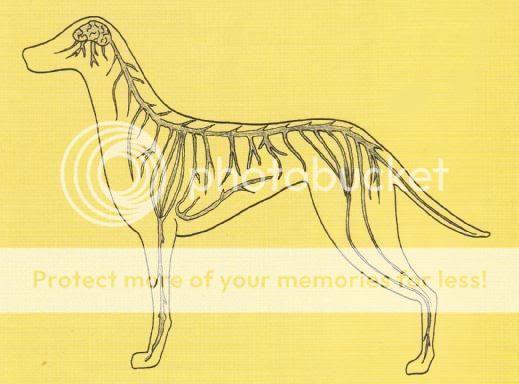Bubbalobob;
Glad you set the record straight that the shoulder shot offers no advantage based on the logic that with a high shoulder shot the bullet will still drop down into the heart and take it out too. The heart is located at the very front bottom of the brisket - at least I've never located one in any other location on the game I've gutted. Except one mid-sized black bear. His heart was missing, but that heart shot was taken from about 70 yds with a good stable rest and I could afford to target the heart. 338 WinM.
Ian M;
I don't feel like there are hard fast rules that absolutely predict an animal's immediate response to the hit because there are so many different caliber, bullet speed, bullet construction, bullet performance, and animal size combinations to work with that it would be difficult to predict with certainty an animal's immediate response to the hit. When I read your post and you described the closer ranges the deer were being killed at, my initial response was that the bullets you were using typically expand dramatically and quickly and on a deer-sized animal; the results are often immediate lights out - sometimes even with a non-CNS lung shot. I've seen deer-sized game drop like lightning when shot through the lungs with high speed frangible type bullets, and have read that a .220 Swift will commonly produce such results when hit through the ribs. Even with my 1000 plus pound brown bear, a simple lung shot was instant lights out. Enough velocity combined with sufficient bullet penetration and expansion can evidently overwhelm the CNS on even a 1000 +lb bear with a simple broadside lung shot. That's something I didn't expect, but observed with my own two eyes.
But then you described some longer 700 yard shots with the same instant kill results on these deer. If your shoulder shots were also spine shots then you pulled off some admirable shooting at those longer ranges, and those kind of results on deer-sized animals with those shot placements are very plausible.
As to meat damage, the higher the velocity of the bullet the greater the difference in the increased meat loss between a shoulder shot animal and a double-lunged animal shot through the ribs. To the point that if you center the shoulders on a deer-sized animal on a broadside shot with a 300 Win Mag caliber-type round anywhere inside 300 yds, 1/2 and even more of both shoulders will be inedible due to bloodshot bullet damage. The monolithic copper bullets are a little better at reducing meat damage on the closer shots than are the lead jacketed expanding bullets. First they don't expand as violently and second they don't send lead and jacket shards out into the meat surrounding the wound channel. I suspect you've shot and cleaned enough game to accept this as a 95% plus fact. Even if you've always targeted the shoulders, you've probably struck a few animals through the lungs aft of the shoulders.
With hyper velocity, even a through-the-ribs lung shot can create an impressive amount of bloodshot meat on the entry side of the ribs. When I'm taking closer range shots on large game with high retained bullet velocity, I very deliberately avoid the front shoulders. I just don't see the sense in wasting the front shoulder and backstrap meat when the lung shot will kill the animal just as surely and do so with relatively minimal meat loss on the ribs. But it is true that the through-the-rib double-lunged shot animals are more likely to travel 50 yds before expiring, and if 50-100 yards means the animal might jump off a cliff before expiring, then that's a rare case where I would either delay the shot until the animal relocated, or else aim for the high-shoulder spine shot. Did that once on a mountain goat from short range. That billy expired lights out just like your deer did, except he was already bedded. Simply rolled over downslope a couple rolls. I also shot another mountain goat about 100 yards from a deep, steep cliff from which the animal could not have been recovered without technical rock climbing equipment. I was shooting a 338-378 Weatherby and lung shot the animal broadside through the ribs. Now goats have a reputation for being suicidal. Distance was about 220 yards and to reach the cliff the goat would have to travel directly towards me, presenting a head on followup shot. The bullet was moving at sufficient speed that I could see the fur blow outwards from the impact to the side of the chest. The animal almost lost his feet at the shot but, wouldn't you know it, started hobbling toward the cliff. I got ready for a frontal charge-style followup shot but the billy only peg-legged it for about 8 yds before piling up.
Interesting thread. Perhaps some more ultra-experienced forum members will sound in.



